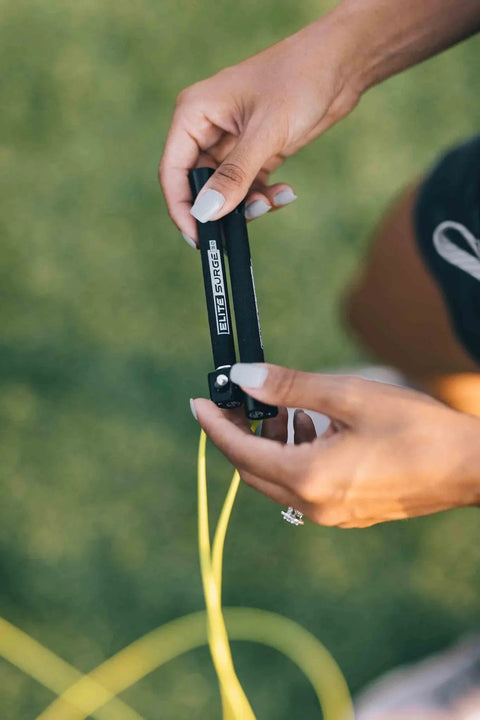What is a Speed Jump Rope?
Sep 07, 2022Jordan Lindstrom

Jump rope has long outstripped it's playground stereotype, and now is hugely popular activity for fitness and competition. And if you're serious about either, you're probably looking for a faster rope … a "speed rope."
Back in the day (1998) when I began coaching a competitive jump rope team, a “speed rope” was simply a jump rope with a thin PVC plastic cord. These were the fastest ropes around, and what everyone used at speed jumping competitions.
The team I coached specialized in speed jumping and we were one of the best in the world. When we heard about another team that had started using a cable rope instead of the standard PVC, we jumped all over it (yes, pun intended. Sorry…). The problem with these early cable speed ropes, though, was the torque on the cable coming out of the handle, which soon broke after a few weeks of jumping.
That’s when the Spark Rope came out, which featured handles attached to the cable at a 90-degree angle. That original Spark Rope revolutionized competitive speed jumping and double under jumping (ie for CrossFit), prompted a number of world records and spawned a host of other speed ropes.

Over the years I’ve talked with hundreds of competitive speed jumpers and CrossFit athletes about their ropes. I’ve also done what seems like a million hours of speed rope testing. Here’s what I’ve found are the most important components of a great speed rope:
For those just starting out (beginners), I recommend a jump rope that accepts a heavier cable or a PVC cord. These ropes will spin a little slower, but will help you get your timing down, and are more forgiving as you get started (missing with a thinner cable can be painful and leave “tiger stripes”)
The best “speed skippers” in the world make about 7 jumps a second. Last year at the World Jump Rope Championships in Hong Kong, Zongfei Duan of China set a new world record with 210 jumps in 30 seconds. While you might not get to the level of Jake or Zongfei, you can certainly learn to become a proficient speed jumper. See the three techniques for improving your speed jumping scores or our guide to double unders.
|
About the Author Matt Hopkins is a former competitive speed jumper and jump rope coach. Matt has won numerous national championships in speed jumping, and his athletes have won several national speed and freestyle titles and have broken world and national speed records. He also taught middle and elementary school PE in Leavenworth WA for 23 years. |
We're all about equipping and encouraging people to take on big challenges, because we know the process of doing hard things helps us grow in character and capacity.
Frequently bought together
You may also like
0 Comments
There are no comments for this article. Be the first one to leave a message!